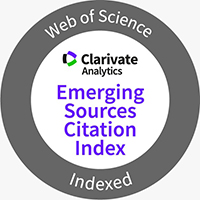MRI Findings and Clinical Outcomes in Tuberculous Meningitis: Insights into Paradoxical Reactions and Disease Progression
DOI:
https://doi.org/10.3941/jrcr.5617Abstract
Objectives: Cases series demonstrating the relationship between brain MRI findings and clinical characteristics, as well as outcomes of patients with tuberculous meningitis (TBM) treated with rifampicin-based regimens over an eight-year period.
Methods: This retrospective study included 87 participants aged ?16 years who were diagnosed with TBM with MRI scans were performed at baseline and three months post-treatment initiation. Clinical outcomes were assessed using the Glasgow Outcome Scale (GOS). Paradoxical responses were defined and analyzed. Ethical approval was granted by the University Hospital Limerick ethics committee.
Results: Baseline MRI abnormalities were present in 94% of patients, with meningeal enhancement and tuberculomas being the most common findings. Paradoxical responses were observed in 82% of cases at two months, with new or worsening MRI findings, primarily miliary tuberculomas and meningeal enhancement. Paradoxical reactions did not correlate with six-month mortality.
Conclusions: MRI plays a critical role in diagnosing and monitoring TBM. Paradoxical MRI findings, although common, were not predictive of treatment failure or mortality.
Teaching Point: MRI findings such as meningeal enhancement and tuberculomas are prevalent in TBM. Paradoxical reactions highlight disease progression but do not indicate treatment failure.

Downloads
Published
Issue
Section
License
Copyright (c) 2025 Journal of Radiology Case Reports

This work is licensed under a Creative Commons Attribution-NonCommercial-NoDerivatives 4.0 International License.
The publisher holds the copyright to the published articles and contents. However, the articles in this journal are open-access articles distributed under the terms of the Creative Commons Attribution-NonCommercial-NoDerivs 4.0 License, which permits reproduction and distribution, provided the original work is properly cited. The publisher and author have the right to use the text, images and other multimedia contents from the submitted work for further usage in affiliated programs. Commercial use and derivative works are not permitted, unless explicitly allowed by the publisher.





